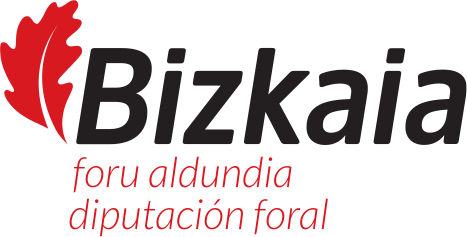Basque ethnography at a glance
Axe: “tool used to cut wood and similar items, made of a flat, sharpened iron blade with eyes, and a wooden handle that is fixed in the eye.” This is the definition given in the Euskaltzaindia dictionary, which describes the technical function of the tool. Behind the axe though, there is a much broader world, deeply rooted in the cultural, professional and sporting spheres.
The axe is not just a tool for cutting trees; but an element that combines work, identity, sport, leisure and change. When we talk about the axe, we inevitably have to talk about forests and the ecosystem that surrounds them. The forest is an ecosystem made up of different types of trees, animals, plants and components, in which man has participated since immemorial times. Let’s imagine a forest in the 16th century: a charcoal burner working, filling the forest with melodies with each blow of the axe, while the chirping of birds accompanies him.
The influence of people who worked with charcoal on our landscape is evident. The work they carried out in the forests, although these were at a low social level, has been decisive in the development of the landscape and natural heritage. They pollarded trees, that is, they cut branches and gave them an appropriate shape, which improved, on the one hand, the quality and productivity of the wood, and on the other, they revalued our natural and cultural heritage.
This activity, called pollarding, consisted of a forestry moulding and exploitation technique. In this process, the branches of the tree are cut and given a specific shape. Pollarding was carried out in the waning days from September to March, never between March and June, respecting natural cycles. The charcoal burners cut the wood from the forest and transformed it into charcoal, turning it into an important fuel. In fact, charcoal was for a long time the main fuel and this gave great importance to the work of these people.
The charcoal burners used the axe to carve the wood and cut down trees. In this work the youngest and strongest people were in charge of cutting the trees, while the oldest or weakest were in charge of removing branches and bark and making small pieces of wood. This activity was carried out in the forest itself because of the difficulty of transporting the material to the village. But the work of the charcoal burners was not only a mechanical job; it was also a kind of competition between groups, so the work in the forest was brought to the squares with challenges and bets.
Over time, forest activity has undergone major changes, and as a result the figure of the charcoal burner has almost disappeared. At present, coal is not as necessary as it used to be, and this has led to major changes in the pattern of forest exploitation. However, the ‘aizkolari’ has survived and taken on a new character. It’s gone from a forest job to a sports activity in the local squares. The aizkolaris no longer wear old and dirty clothes; now they wear neat and white clothes, becoming the antithesis of origin, which has now become a sporting spectacle, which brings many people together. So the activity of the aizkolari has gone from being a job to being a sport. And the axe, if it’s a mere instrument, has become a sporting instrument. In this transition, the axe has been the protagonist, even those who made those axes, who have played an important role in the evolution and adaptation of this tool.
The evolution of the axe is a mirror of the evolution of Basque society. The axe is rooted in ancient forests and trades, and has now become a symbol of sport and culture. It is therefore not a mere instrument; it is a symbol of the profound relationship between history, profession, and sport, and an important part of our heritage. The aizkolaris, the axes and the axe makers together have built a bridge between tradition and innovation, a bridge deeply rooted in the essence of Basque culture.
Ametz Gurrutxaga



